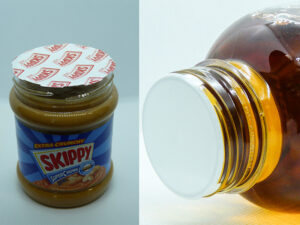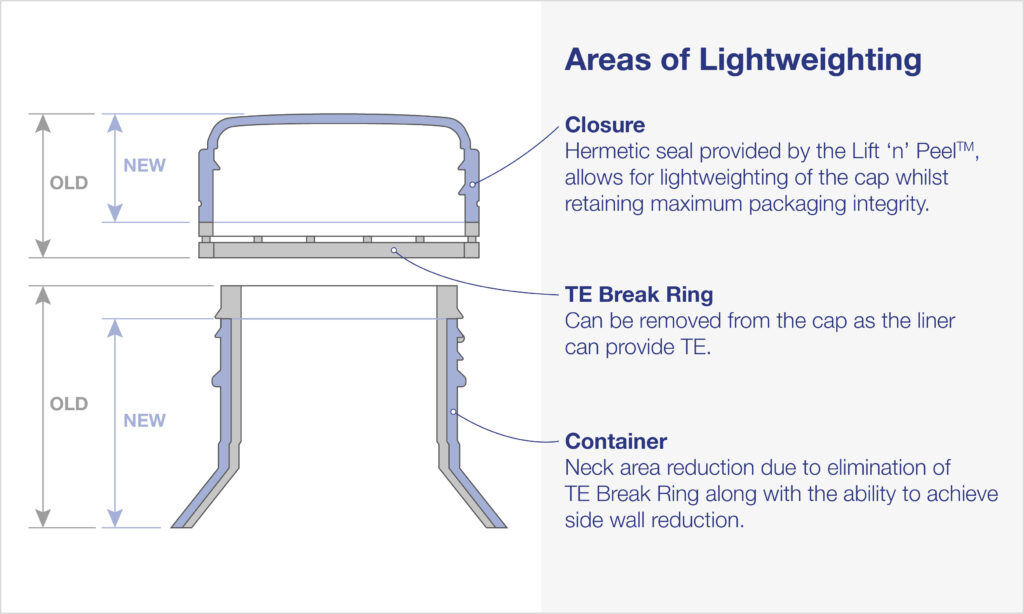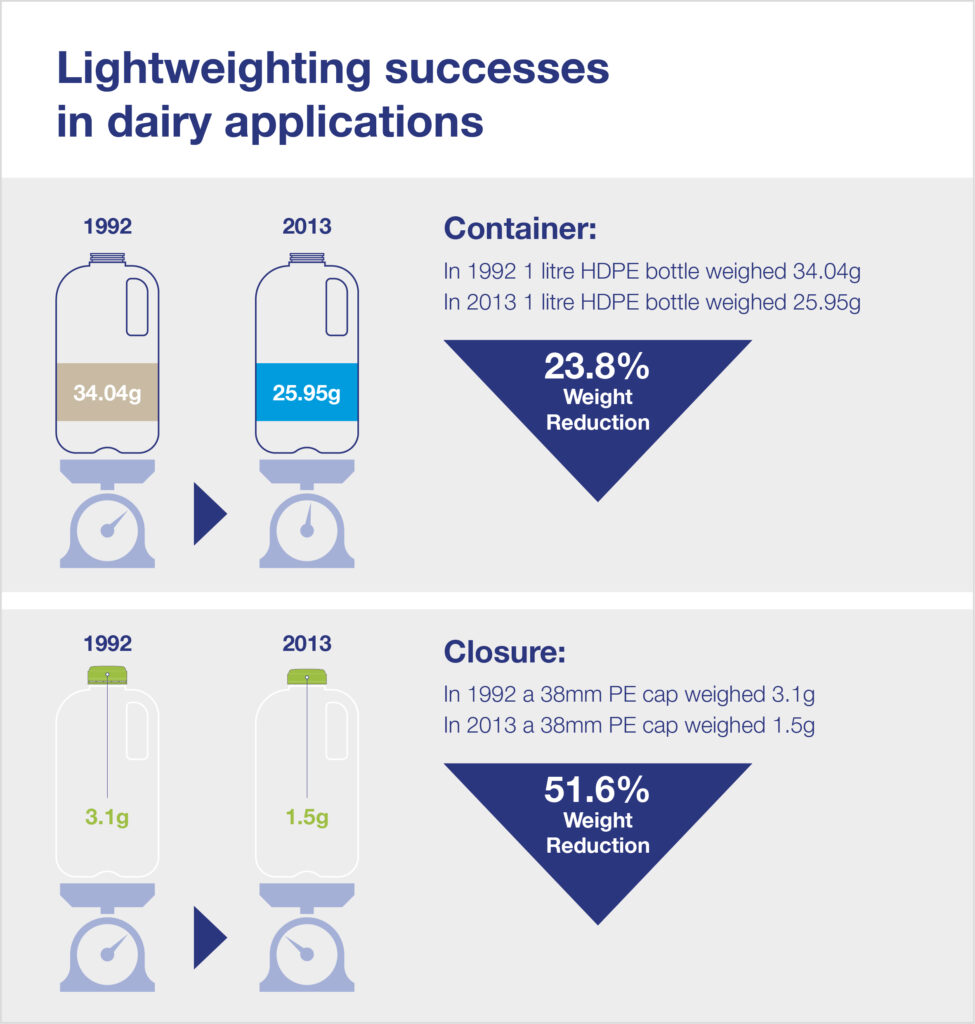The Benefits of Lightweighting
By John Brown, Vice President of Global Marketing at Selig Group
Reducing plastic impact
 With less than 10 percent of plastic packaging at present recycled[i], many companies are looking for ways to reduce the amount of plastic used in their product packaging. Lightweighting – the reduction of the overall amount of any material in a piece of packaging – has become increasingly important as part of the sustainable packaging toolbox. Alongside the choice of alternative packaging and using recycled materials, lightweighting is being used by large and small food and beverage producers alike.
With less than 10 percent of plastic packaging at present recycled[i], many companies are looking for ways to reduce the amount of plastic used in their product packaging. Lightweighting – the reduction of the overall amount of any material in a piece of packaging – has become increasingly important as part of the sustainable packaging toolbox. Alongside the choice of alternative packaging and using recycled materials, lightweighting is being used by large and small food and beverage producers alike.
For example, the world’s largest food and beverage company, Nestlé, has reduced the weight of its water bottles by 22 percent over the last ten years. Through its eco-design process the company has managed to avoid the use of more than 142,000 metric tons of packaging material by the end of 2019, compared to the baseline of 2015[ii].
Promoting freshness, safety and affordability
In the U.S. 40 million tons of food is wasted every year[iii], equating to more than $161 billion[iv]. A significant amount of this waste is from fresh produce thrown away by households each year. Although a consumer re-education program is needed, packaging and its ability to extend the shelf-life of foods plays a key part in the food waste reduction puzzle.
Plastic is difficult to replace in many food and drink applications, as it promotes product freshness, affordability and safety. However, the practice of lightweighting, along with improved packaging recyclability and reusability are all helping reduce the negative impact of this material on the environment.
Diageo, for example, has saved 1,323 tons of packaging in the U.S. by a simple redesign of its 1.75l Smirnoff bottles. By removing the handle on the side of the bottle, 4.8 ounces, or 12.6 percent of the total container weight, has been saved. With 8.7 million bottles being sold in this format, the reduction saves approximately the same weight as seven Boeing 747s[v].
Lightweighting as a process delivers a range of cost and environmental benefits. It helps reduce shipping costs, has environmental benefits and is proving popular with eCommerce applications. However, attention needs to be paid to the quality of the packaging and the overall consumer experience it delivers. Afterall, thinner packaging can lead to performance issues.

Lightweighting and induction heat sealing
With this in mind, packaging must be robust, tamper-evident (if the product requires it) and leak free if it is going to provide customer satisfaction. To achieve this, while also lightweighting the packaging and closures, producers have turned to a variety of methods to allow lightweighting. This includes changes to molding technology and packaging redesign to remove unnecessary features and the corresponding lowering of the weight. Lightweighting combined with induction heat sealing has stood the test of time however, as it creates a strong, hermetic seal that has many benefits.
One of the primary benefits of induction heat sealing is that it is a quick and economical way to create a strong, hermetic seal. It can provide clean peel on packaging for recycling purity and also tamper-evidence, if needed. This added security feature enhances customer confidence in the product’s integrity and helps deter instore sampling. The hermetic seal promotes freshness retention and improves the shelf-life of products. Induction heat seals also provide strong leak prevention and spoilage level reduction. This sealing method is suitable for high-volume operations and can be used on a wide range of glass and plastic containers.
Thanks to induction heat sealing, key areas of a container can be lightweighted. These include the closure, any TE Break Ring and the container itself. The hermetic seal created by using an induction heat seal allows for lightweighting of the cap. It also allows for reduction in the packaging’s side wall, whilst retaining maximum packaging integrity. The TE Break Ring can be eliminated from the cap, as the liner can provide tamper evidence. Finally, there can be neck area reduction on the container itself, due to the elimination of the TE Break Ring.

How induction heat sealing works
Induction heat sealing uses a laminated liner which is placed inside the container closure. The essential components in the seal include an aluminum layer and a heat seal layer. The specific material of the heat seal layer is chosen on a case-by-case basis, depending on the material of the container and what it is packaging.
On the automated production line, screwing the cap onto the container brings the seal into position. The assembly then passes within the field of electromagnetic energy, which generates an induction current – and heat – in the aluminum, without any need for contact. The heated seal adheres firmly to the rim of the container as it cools. As well as being fast, induction heat sealing is relatively inexpensive and environmentally friendly due to its low energy and material consumption, including plastics and its lightweight end results.
An example of induction heat sealing’s success can be seen in the dairy industry. As a result of adding induction heat seals to its products, one New Zealand based milk brand has experienced significant improvements in leakage prevention and the elimination of spill mats. As well as a corresponding growth in sales, the company has also seen its milk improve in shelf-life from 12 to 14 days.
There are significant environmental, cost and functional benefits to be achieved when the potential of induction heat sealing and packaging redesign are maximized. With increased productivity, reduced returns and lengthened product life some of the advantages, is there any reason to delay the lightweighting process?
About the Author
John Brown is the vice president of global marketing at Selig Group. He has been in the packaging industry for over 25 years, with focus on the food, beverage, pharmaceutical, personal care, and industrial chemicals markets.
[i] https://news.nationalgeographic.com/2017/07/plastic-produced-recycling-waste-ocean-trash-debris-environment/
[ii] https://www.nestle.com/ask-nestle/environment/answers/tackling-packaging-waste-plastic-bottles
[iii] Source: Environmental Protection Agency
[iv] Source: U.S. Department of Agriculture
[v] https://www.diageo.com/en/society-2030/case-studies/reducing-packaging-weight-we-can-handle-it/






